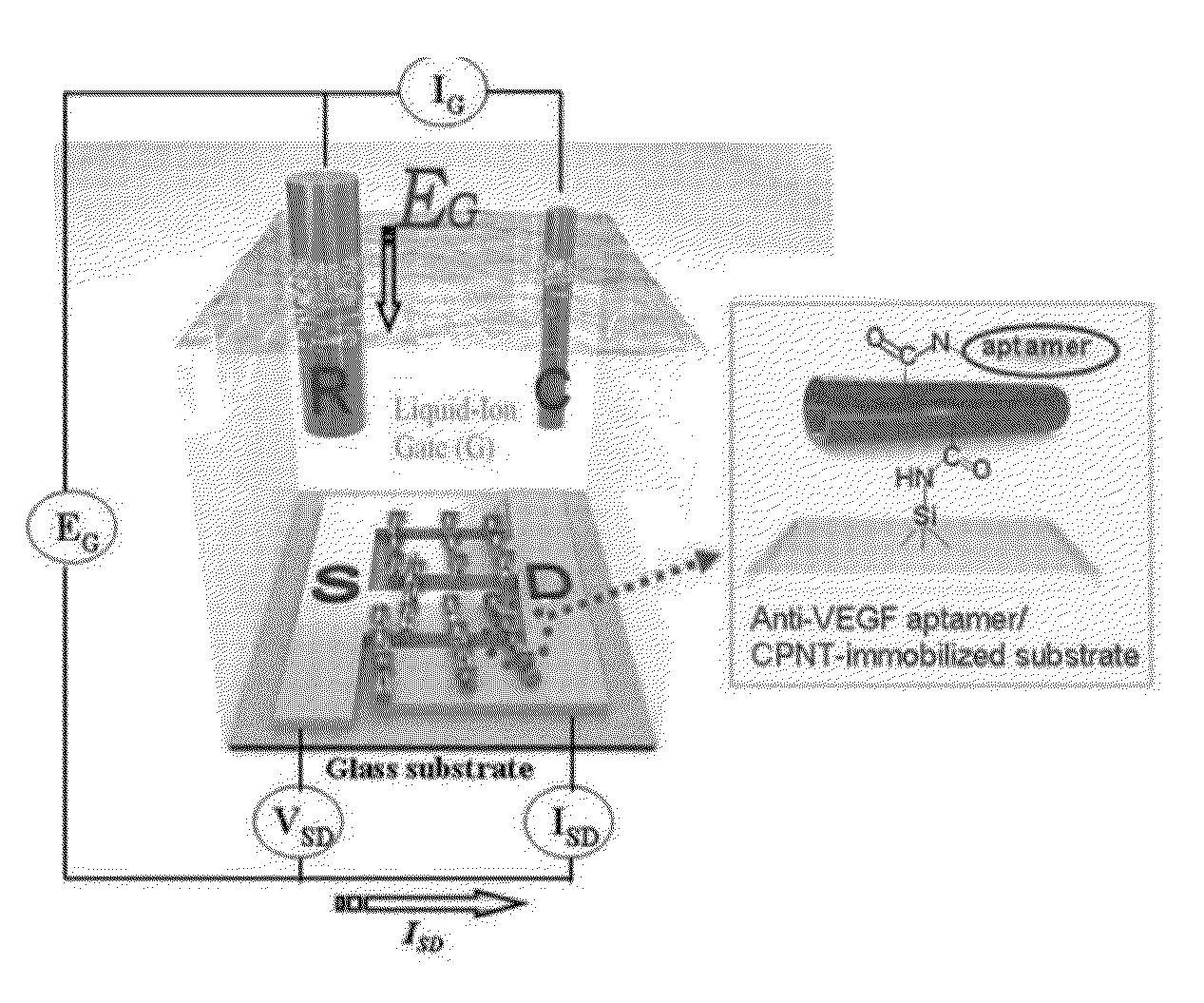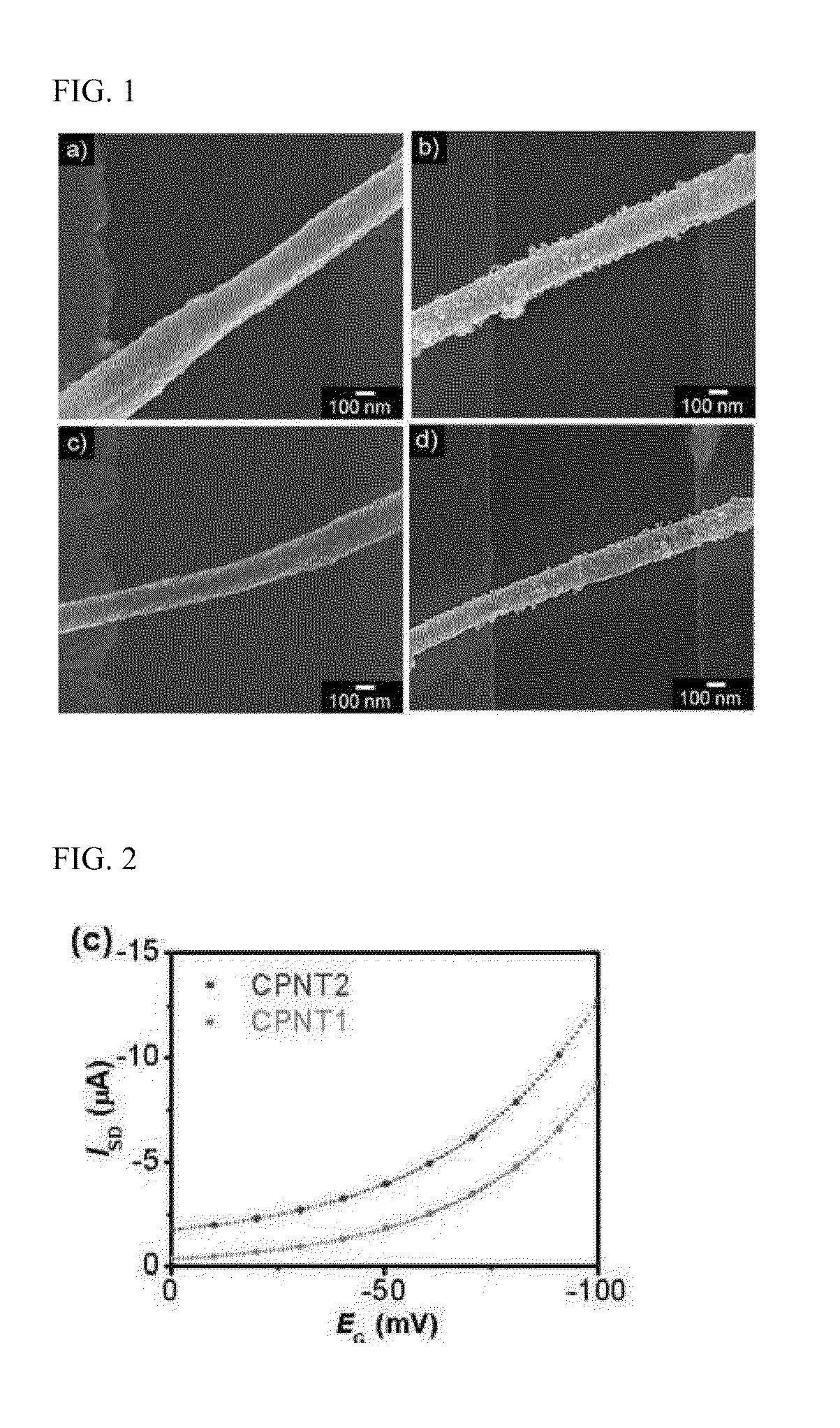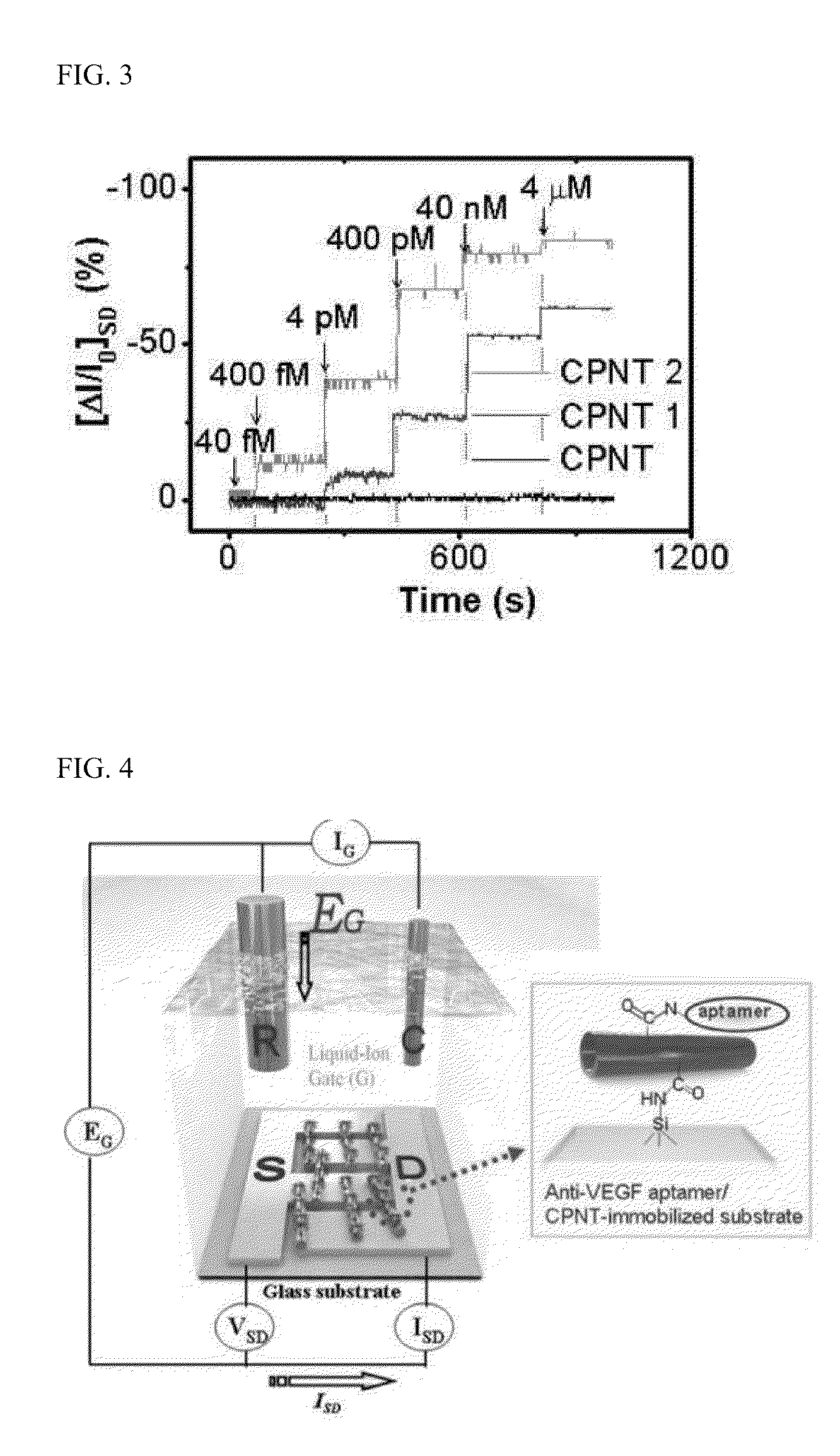Method for fabricating novel high-performance field-effect transistor biosensor based on conductive polymer nanomaterials functionalized with Anti-vegf adapter
a technology of conductive polymer nanomaterials and biosensors, which is applied in the direction of discharge tubes/lamp details, instruments, thermionic cathodes, etc., can solve problems such as sensitivity degradation, and achieve the effect of reducing the formation of holes and reducing the flow of electric curren
- Summary
- Abstract
- Description
- Claims
- Application Information
AI Technical Summary
Benefits of technology
Problems solved by technology
Method used
Image
Examples
example 1
[0061]A reactor containing 20 mL of hexane was placed in a reactor vessel adjusted to −7° C. with a thermistor, 7.9 mmol of AOT was added thereto and the resulting mixture was stirred to form micelles. An aqueous ferric trichloride solution (7M, 0.5 mL) was incorporated into the reaction mixture and a mixture of pyrrole (6 mmol) and pyrrole-3-carboxylic acid (0.4 mmol) was then slowly added dropwise thereto. The resulting mixture was stirred at −4° C. for 48 hours to perform polymerization and an excess of ethanol was added to the reactor. The reaction solution was transferred to a separatory funnel and the precipitated carboxylated polypyrrole nanoparticle layer was then collected. The carboxylated polypyrrole nanoparticles thus prepared were observed with an electron microscope. As a result, nanotube particles having a diameter of about 100 nm and a length of 5 μm or higher were observed (FIG. (c)).
[0062]An interdigitated microelectrode array was patterned on a glass substrate by ...
experimental example 1
[0069]Regarding biosensors fabricated in Example 1 and Comparative Example 1, a channel region provided between a source (S) electrode and a drain (D) electrode was formed using carboxylated polypyrrole nanotubes. A source-drain voltage was applied using a potentiostat connected to a computer, and current variation (ΔI / I0=(I−I0) / I0, I and I0 indicate a current and an initial current value measured in real-time, respectively) was monitored in real time.
[0070]As a result, it was confirmed that the micro carboxylated polypyrrole nanotube (CPNT2) channel region fabricated at a lower temperature (Example 1), as compared to conventional cases exhibited higher conductivity than that of the nanomaterial (CPNT1) prepared in Comparative Example 1 (FIG. 2).
experimental example 2
[0071]To investigate the action of anti-VEGF aptamer for diagnosing cancers on biosensors fabricated in Example 1 and Comparative Example 1, polypyrrole nanotubes, to which anti-VEGF aptamer for diagnosing cancers was not adhered, were applied to the channel region. As a result, as shown in FIG. 3, when VEGF (Vascular Endothelial Growth Factor) was injected, no variation in source-drain current was observed. This means that selective reaction between anti-VEGF aptamer for diagnosing cancers and VEGF causes variation in source-drain current.
PUM
| Property | Measurement | Unit |
|---|---|---|
| Temperature | aaaaa | aaaaa |
| Temperature | aaaaa | aaaaa |
| Size | aaaaa | aaaaa |
Abstract
Description
Claims
Application Information
 Login to View More
Login to View More - R&D
- Intellectual Property
- Life Sciences
- Materials
- Tech Scout
- Unparalleled Data Quality
- Higher Quality Content
- 60% Fewer Hallucinations
Browse by: Latest US Patents, China's latest patents, Technical Efficacy Thesaurus, Application Domain, Technology Topic, Popular Technical Reports.
© 2025 PatSnap. All rights reserved.Legal|Privacy policy|Modern Slavery Act Transparency Statement|Sitemap|About US| Contact US: help@patsnap.com



